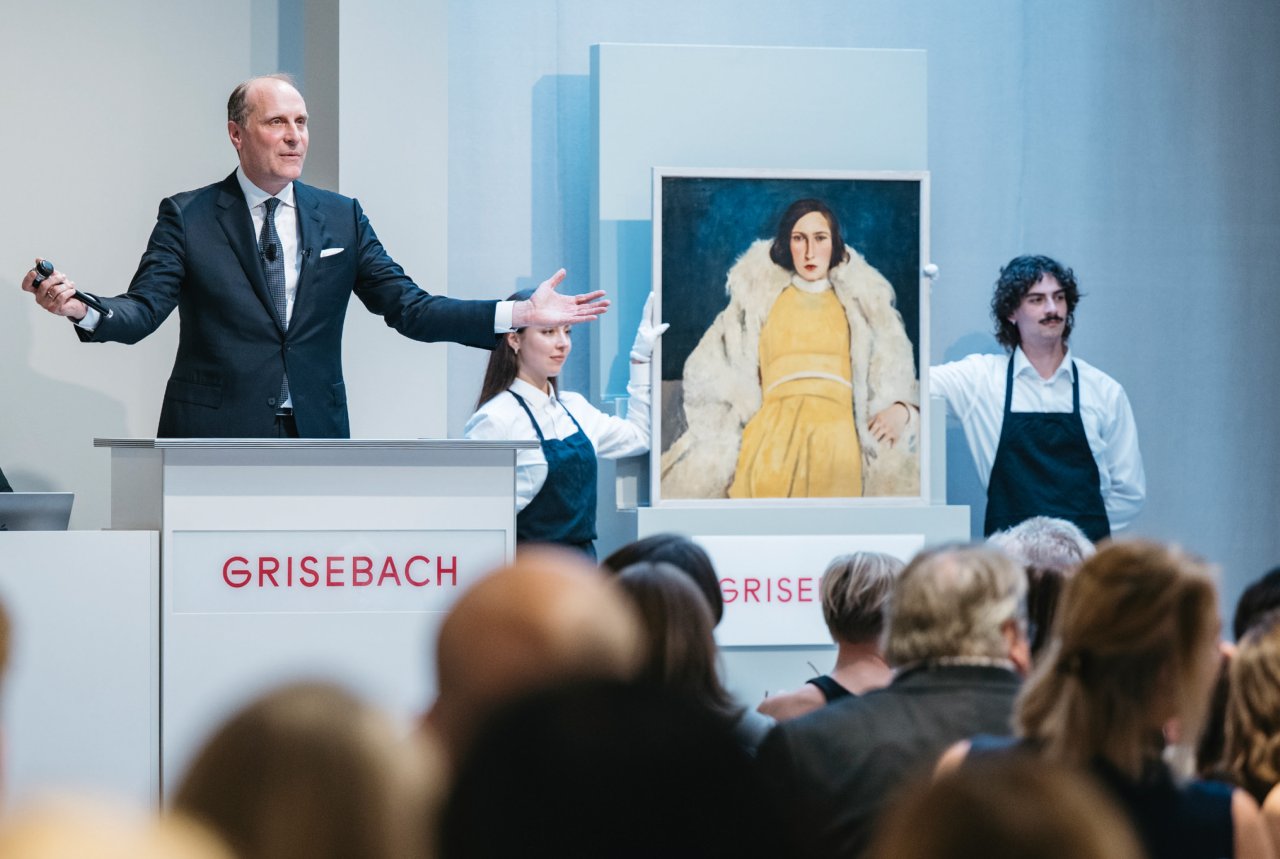“Venice Biennale years are good years for Art Basel” – that used to be the old adage among art dealers. This changed in 2015, when then-curator Okwui Enwezor moved the opening date of the Biennale di Venezia forward to May to prevent the event’s commercialization. It turned out differently, however. Insiders nowadays regard this allegedly not-for-profit event as the largest art fair of the world. Galleries are having staffers stand next to works by their artists to answer questions. In the absence of this magnet, which attracted hordes of collectors and curators from overseas to Europe every two years, Art Basel now has become a reliable barometer for the mood of the art market in a given year, particularly that of the US market.
This year's iteration of Art Basel confirmed what had already become clear at the prestigious evening sales of the major international auction houses: The top segment of the market (nine-digit range) is flagging, and the ten-digit auction results (beyond 100 million dollars) seen in pre-pandemic times currently are not conceivable. Deep-pocketed trophy hunters and speculators mostly have called off the shopping spree. The New York spring auctions netted a total of roughly USD one billion, about 20 percent less than the expected minimum, and over a third less than in the prior year. The reasons are manifold and antedate the widespread uncertainty caused by Donald Trump's authoritarian and erratic politics. For one thing, the younger generation of art collectors often prefers to look for their own preferred formats and artists, outside of traditional canons. For another, the auction houses and conglomerates represented at art fairs increasingly are seeking to build bridges to the luxury and fashion industry.
The German market is relatively immune to these developments and is proving robust. Here, the auction landscape is shaped by mid-sized companies and operates with significantly lower financial volumes, which is proving to be a plus in the current situation. The most expensive work of art ever auctioned in Germany is Max Beckmann's Selbstbildnis gelb-rosa, which fetched around EUR 20 million at Grisebach in 2022 (EUR 23,225,000 including premium), but this remains an absolute outlier. The price of a New York top lot, by contrast, often exceeds the entire annual turnover of any individual German auctioneer. This said, German auction houses have a broader base and therefore are more resilient, with narrower fluctuations in performance. The practice of “flipping,” i.e. rapidly buying and re-selling works by hyped artists, often fresh off the easel, is not common in this country. The consignment of what are called “middle-market” artworks in the less complicated European Union, often looked down on by the international marketplaces, is now becoming more attractive in light of the weakness of the global players and the fiscal complications and uncertainties they are subject to.
But in this country, too, trends in line with international developments can be observed. Thus, outstanding works within a particular artist’s oeuvre are still in demand and sometimes are bid up to considerable new heights. As in New York or London, however, consignors in Germany still tend to envision the top bids achieved in years past, which no longer are within reach in many cases.
Previously neglected segments offer rays of hope, as well. Women artists by now have arrived on the contemporary exhibition scene, even if they still tend to be undervalued, especially on the secondary market. This is changing, as is the appreciation for the New Objectivity – even for second-tier lots –, which has been gaining in popularity for years now.
The German market also is getting a boost from the reduced turnover tax rate on art. While galleries in the past were able to reduce their tax burden by applying highly intricate agency and commission models, auction houses had to charge the taxes in full to their customers. This hit dealer consignments particularly hard, since the full turnover tax rate of 19 percent fell due on both the hammer price and the buyer's premium. The seven-percent rate that now applies means that buyers can acquire a work of art for less. And it means that they can afford to bid at least one step higher without paying more in the end.
